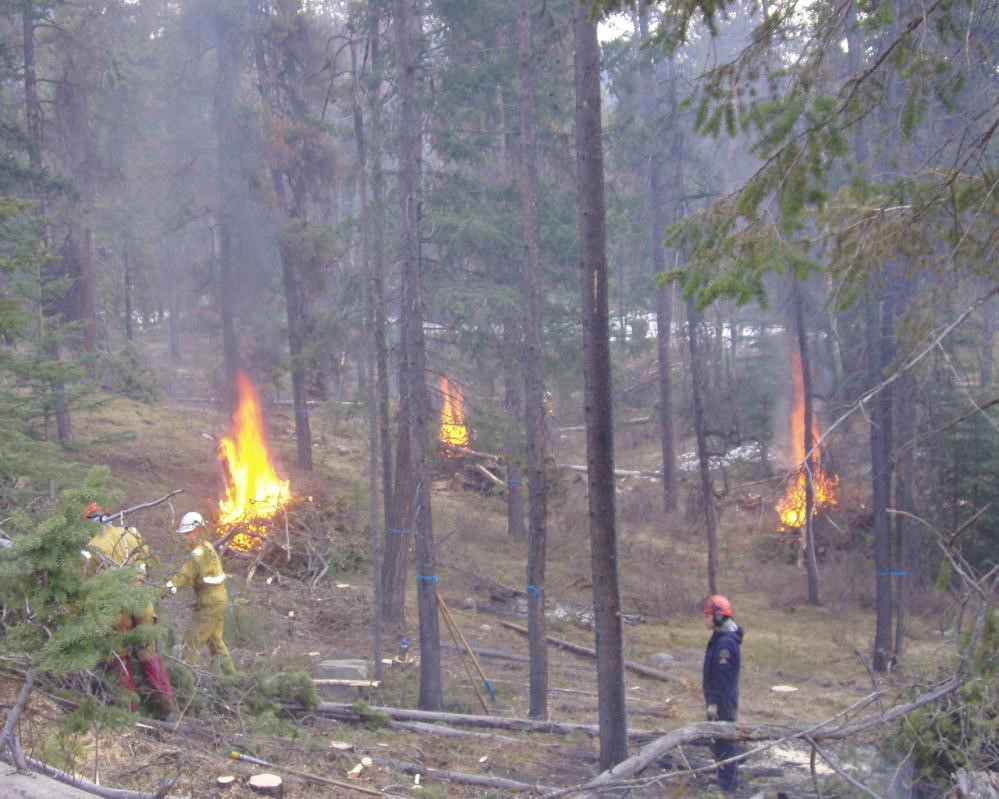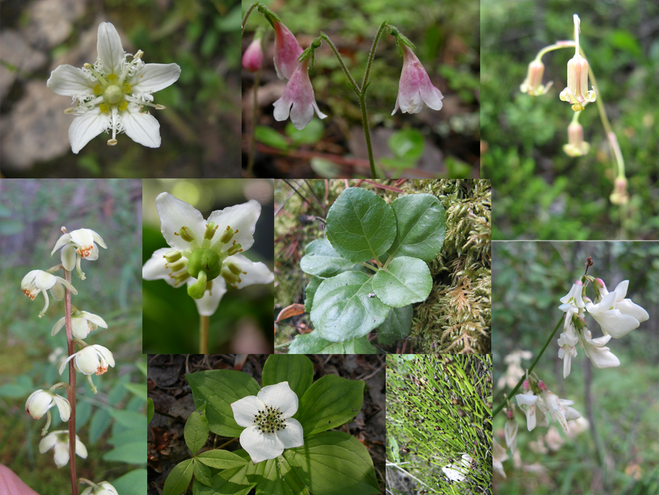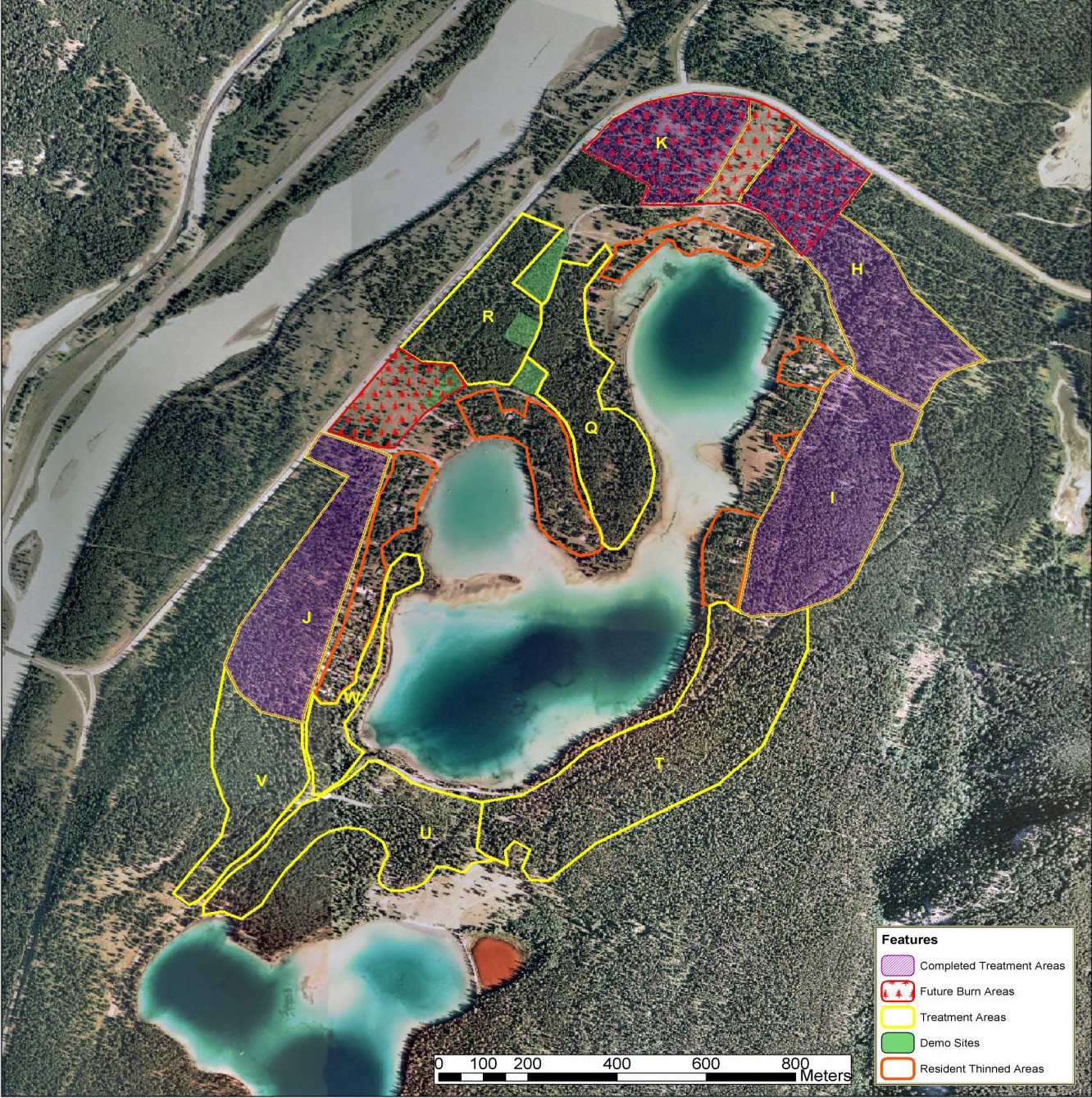Overview
Community wildfire protection is not just about protecting buildings. Proactively preventing wildfire from threatening infrastructure permits fire to be safely used as a managed disturbance in urban interface forests. The Jasper Firesmart/Forestwise program was conducted to shield the town of Jasper as well as restore the Douglas Fir forest in the Athabasca Valley.
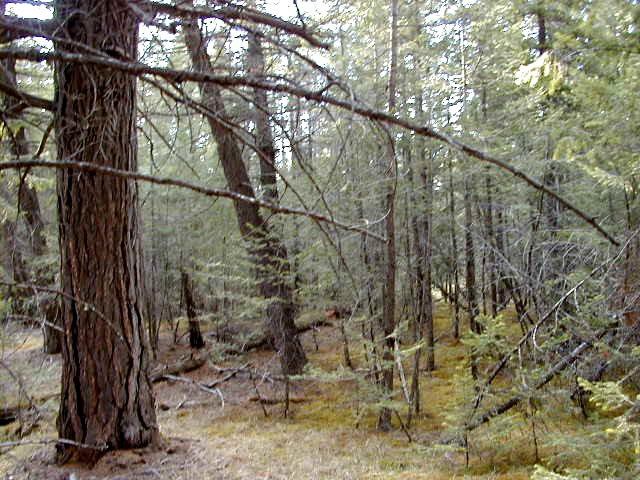
Photo credit: Alan Westhaver
Background
Sustained achievement of long-term EBM goals requires that the tools used to manage forested ecosystems be available. Two of these tools are prescribed (human set and controlled) and managed (naturally started, human controlled) fires. But using these tools come with risks in Alberta given the amount of human infrastructure in or adjacent to forests. The consequences of a managed fire escaping and destroying industrial installations, towns or cities are often grave enough to encourage complete fire suppression.
The Jasper Firesmart/Forestwise project was conducted with several EBM goals in mind, including restoring the natural structure of a Douglas Fir forest. However, its chief goal was to create and maintain a less combustible forest around Jasper that would permit Parks Canada to manage wild and prescribed fires in the park with a focus on natural disturbance, not fire suppression.
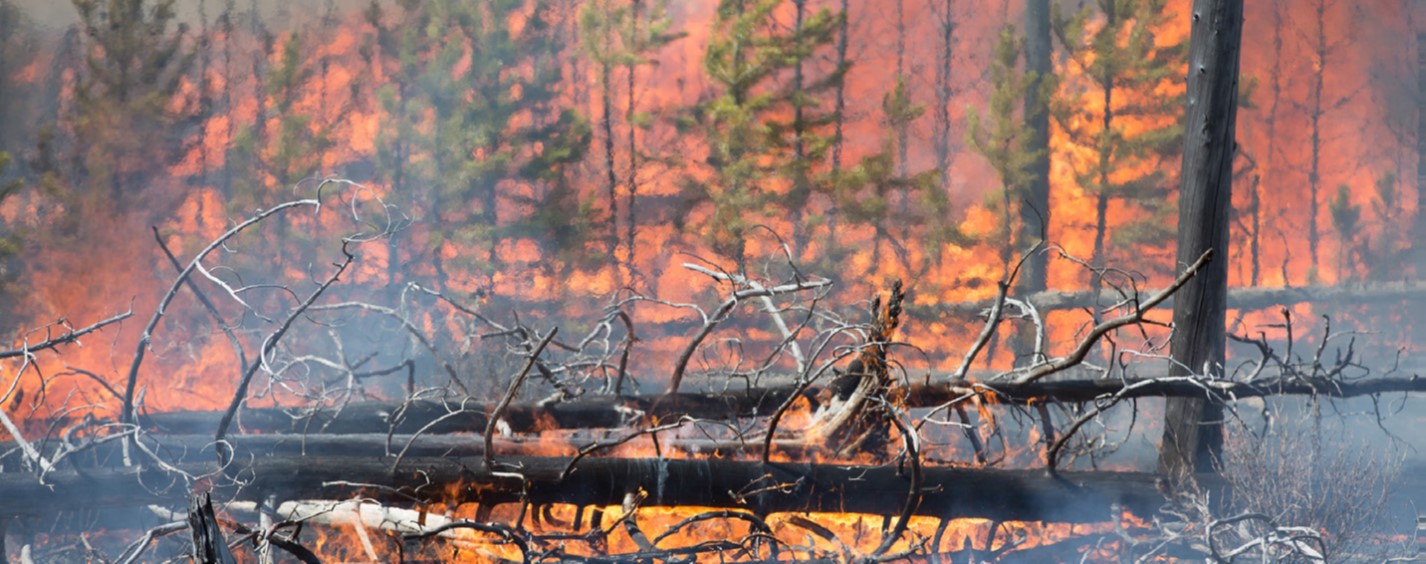
Photo credit: Parks Canada
Innovation
The Firesmart/Forestwise project linked fire protection and forest restoration. Fire breaks are often perceived as areas devoid of forest fuels. And although treeless gaps are a natural component of the boreal landscape, open canopy forests that result from low or moderate intensity fires were also common, particularly in the montane ecosystems of the Rocky Mountains. For this reason, the Jasper project restored the natural, open structure (and low-flammability) of the Douglas Fir forest, emulating a low intensity fire using selective clearing and prescribed fire.
Discovery
This project was conducted over 30 months covering more than 200 hectares of forest surrounding Jasper, Alberta. Program leaders concluded that fuel management for the purpose of reducing wildfire risk can be compatible with wildlife conservation and forest restoration. The reports from this project are a series of species-specific mitigations, guidelines, and beneficial practices suited to communities or individual homes.
Where in the wheel?
In addition to pursuing restoration and disturbance process goals, the Jasper Firesmart/Forestwise program would not have been successful without deep community involvement. Communities and stakeholders were not only consulted, but local residents were, and continue to be, involved in Firesmart activities. Resident work bees to clear understorey brush in proximity to their homes were one of the first activities undertaken in the project and continue up to today.

